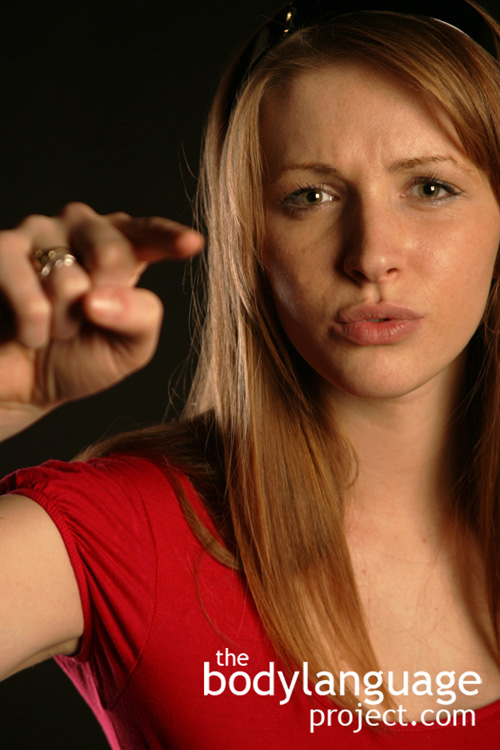
Body language makes the intent of a message much more clear. This ‘spear thrower’ isn’t interested in listening to your viewpoint.
What proportion of communication is affected by the actual words versus how the words are used and the body language that it accompanies it? I don’t know of any real metric by which to calculate this, so it’s really anyone’s guess. Suffice it to say that the vast majority of communication and meaning has nothing at all to do with words. Body language in this case gets lumped in together with other signals such as tone, pitch and word emphasis whilst we subtract the actual words and their meaning. Take the phrase “Would you prefer to lie?” as an example. If I were to emphasize the word “would” it puts the emphasis on “you”, but if I put the emphasis on “lie” it puts emphasis on the action. Confusing things further and not privy to the spelling of “lie”, one wouldn’t know if I was speaking about telling the truth or “lying”, or taking a nap or “laying”. Emphasis is used to add meaning and emotion to our speech by stressing specific words and can completely change the meaning of the sentence. This can also be done by using a higher tone, using longer stressed syllables, or increasing the volume as we speak certain words. Even in the cases above I have used a nonverbal method to emphasis words by using the italics function, a feature of this writing program that arose out of necessity.
Going back to our previous example, we also have homonym’s which are words that share the same spelling and same pronunciation but have different meanings. An example includes the word “bow” which can mean to bend forward, the front of a ship, a weapon which fires an arrow, a ribbon tied in a knot (a bow tie) or to bend outward to the sides (bow-legged). Polysemes are words or phrases with multiple related meanings. For example “bank” can describe a financial institution that handles money or it can be used to describe trust as in “We’re friends, you can bank on me.” Antagonym’s are forms of slang that actually mean their opposite. Examples of antagonyms include “bound” for a direction or heading, or tied up and unable to move, cleave can be to cut apart or seal together, buckle can mean to hold together or to collapse, clip means to attach or cut off, and so on. Other time we use words to mean the opposites. “That skateboard trick was sick” comes across in slang as meaning that it was actually a pretty good trick.
While the myriad of definitions stemming from word-use might confuse you, don’t let it bother you too much because this is the only time it actually matters. In fact, body language is the likely reason our vocabulary is permitted to be so confusing and most of us have at least a rudimentary understanding about how our bodies and verbal language coincide to produce meaning anyway. The point of raising the dysfunction that peppers verbal language is precisely because confusing word meaning plays such a minor role in our lives. When we just don’t get it, in comes body language to sort things out and bring everyone back on to the same page.
What we are looking to accomplish in this book is a higher order reading of nonverbal language to graduate from simple word meaning to get at the hidden ‘script’ that unfolds ‘between the lines’, so to speak!
